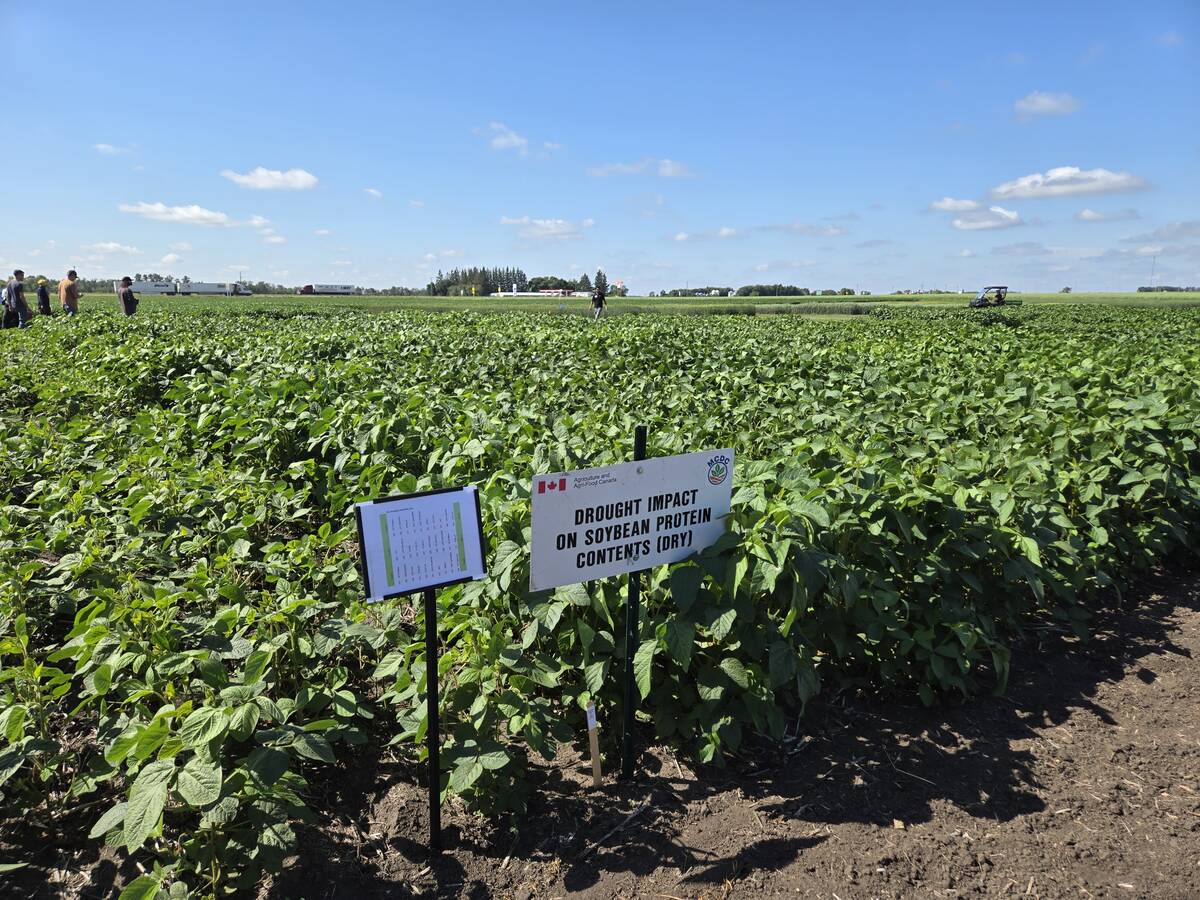Grain and hog producers on the eastern Prairies wait for the day when they will have cereal crop varieties with full resistance to fusarium head blight.
Because that day is likely years away, producers need to adopt other strategies to cope with a disease that harms yield and quality of wheat and barley crops.
For hog producers, numerous options are being tested to lower the level of mycotoxins that fusarium head blight causes in feed grain.
The mycotoxin of most concern is deoxynivalenol, or DON, which can have serious effects on the health and performance of swine.
Read Also

Carberry field day looks for agriculture solutions
Manitoba farmers explored research solutions for resilient crops, perpetual agronomic issues and new kinds of agricultural products at a field day at the Manitoba Crop Diversification Centre in Carberry on Aug. 6.
One option is being studied at the University of Manitoba under the direction of Jim House, an associate professor in animal science. Research there shows that removing the outer hull of DON-infected barley can dramatically lower the levels of DON in the grain.
The university’s research used a commercial pearler to remove the outer hull of barley kernels. The pearler is like a grindstone, rubbing away the hull while leaving the remainder of the kernel intact.
House said research indicates that by removing the hull using a pearler, the DON level in grain could be reduced by as much as 70 percent.
“It reduces the grain mass but brings a dramatic reduction in DON.”
House said more research is needed to determine what nutrient value is lost in the process. That loss would have to be weighed against the potential to increase digestible energy in barley.
As well, he said, a study is needed to learn whether hull removal would be economical on a commercial scale where large volumes of barley are processed for hog feed.
While at Hog Days in Brandon Dec. 3, House gave an overview of other options investigated by the research community to manage DON levels in grain.
Sieving: Screens out smaller, damaged kernels caused by fusarium head blight. However, it does not completely rid the grain of DON contamination since larger kernels also can carry the mycotoxin. A downside is that large volumes of grain may get screened out that have limited uses elsewhere.
Washing: DON is water soluble, so levels could be reduced by washing. However, if the grain then has to be dried for processing into a swine ration, it could be too expensive.
Biological controls: These include the use of microbes to convert DON into a form that would not be toxic to swine. The method has shown some effect, House said, but a lot more research is needed, including an examination of whether other toxins might result from the breakdown of DON.
Dietary fortification: Enzymes and protein could be added to offset reduced feed intake when hogs are fed grain infected with DON. The enzymes work inside a pig’s digestive system to help break down feed, resulting in more nutrients taken up during digestion.
Flavouring: This attempts to mask DON in grain. House said a hog’s aversion to grain infected with the mycotoxin seems to go beyond its sense of smell. The toxin appears to affect brain chemistry, which prompts the animal to shy away from infected feed.
Additives such as adsorbents: Adsorbents are included in the ration to bind with the mycotoxin so that it doesn’t get absorbed into the animal’s body. House said the research so far suggests that method is “not all that effective.”
Sodium carbonate, heat and water: Heat treatments lower DON levels in infected grain. House said this treatment has to be done over time, which tends to make it unaffordable.














